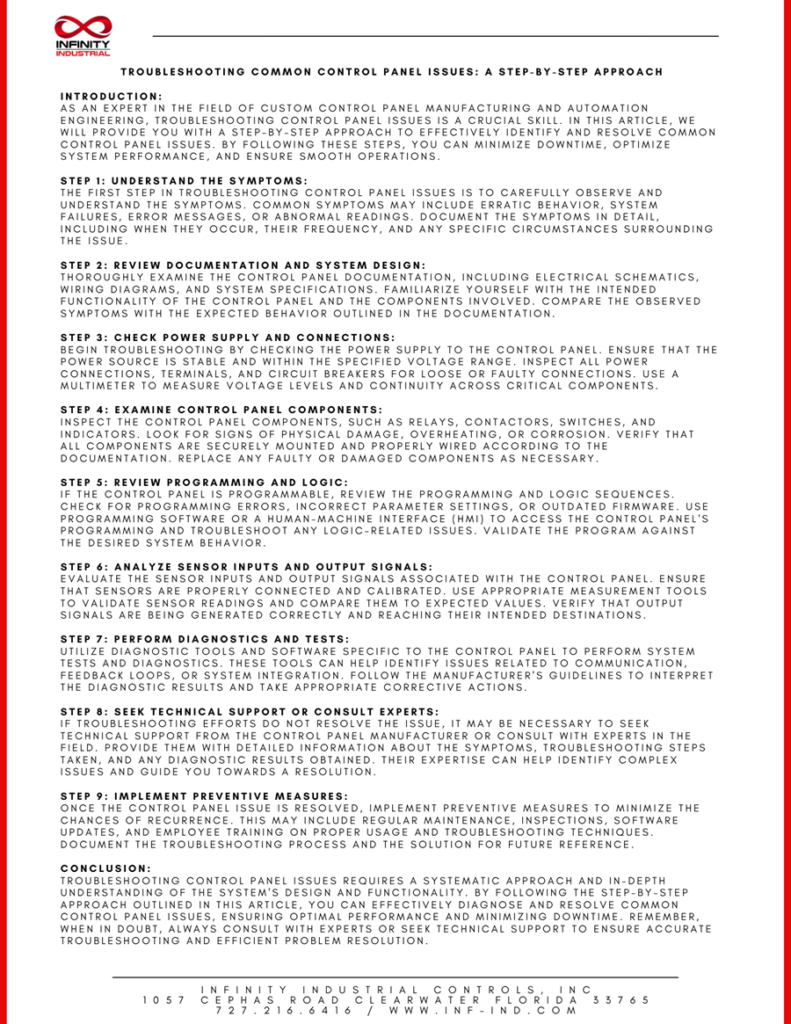Technology can be a hindrance or benefit, dependent on how the technology is working. When working with machinery, troubleshooting or “debugging” is paramount to solving technological problems. When troubleshooting, it is important to have a step-by-step guide on how to troubleshoot. In this article, we will walk through troubleshooting a control panel.
It is important to work backward and analyze the current information; when troubleshooting. The first step in troubleshooting a panel is to understand the symptoms of the problem. Are there any error messages on the control panel, or is it a system failure? One cannot troubleshoot a control panel when they have not determined the issue. After analyzing the information, review the documentation. Determine how the control panel should operate based on the documentation and compare the current behavior to determine what fixes can; be implemented.
One of the first things our engineers do when testing a panel is to check that the power supply, wiring, and components work effectively. Similarly to initial testing, the next steps in troubleshooting are to check the power supply and connections and examine the control panel components. One important step is to verify that the panel is within the specified voltage. If this occurs, the power supply will be unsecured, and the components will not operate effectively. Finally, determine if the panel is programmable: then determine if the HMI and programmable controller(PLC) have any programming errors.
Troubleshooting is similar to testing because you are determining if a bug exists. Troubleshooting is the act of finding the bug and fixing it. Next, after determining the power supply, PLC, and connections are established, check the sensor input and output signals. Determine the appropriate measuring tools to determine current values and compare them to the expected results. Once this step has occurred, diagnostics tests take place.
Testing is paramount for a control panel; it is a critical step in both troubleshooting and control panel deployment into the market. The testing phase in troubleshooting determines communication issues, feedback loops, or issues related to system integration. Utilize the manufacturer’s guidelines for diagnostic results. If the issue persists, contact the manufacturer or field experts to determine any complex problem with the panel.
Establish a solution, then implement preventive maintenance. First, implement an inspection team or schedule both; internal and external inspections throughout panel construction. It is important to schedule a time for the lubrication of the machines; efficiently. Make sure to schedule preventive maintenance and keep appropriate records. Ultimately, garner a well-trained staff to perform the maintenance and effectively store spare parts.
If you have any questions, please feel free to give us a call: at 727–216–6416. We pride ourselves on responsiveness; our goal is customer satisfaction. What separates Infinity Industrial from the competition? We are a panel shop dedicated to customer satisfaction and providing custom solutions!
[popup_anything id=”9350″]

